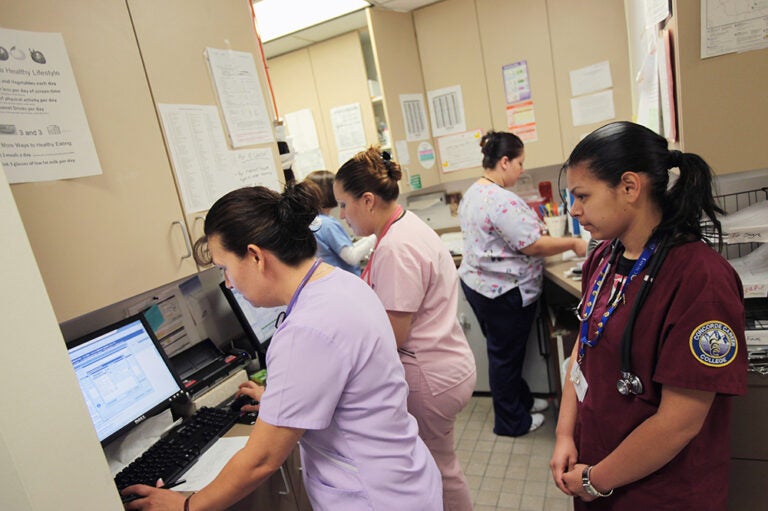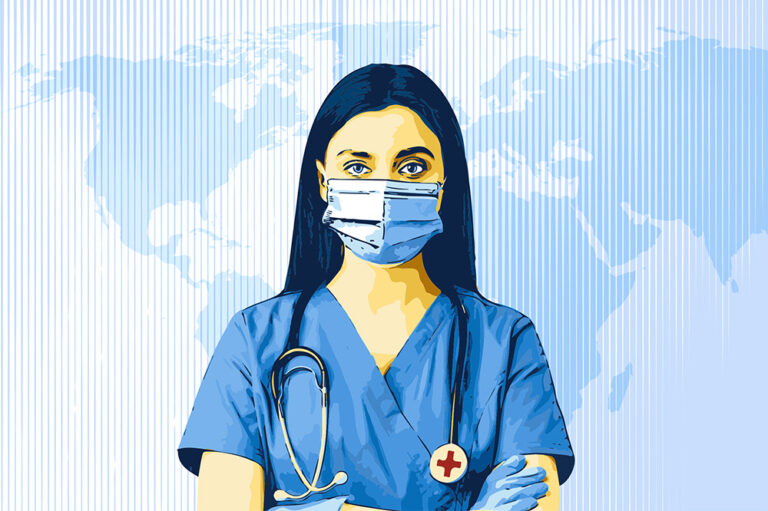The United States spends significantly more on healthcare compared to other developed nations but does not have better health outcomes. America’s uniquely inefficient healthcare system is also a key driver of our unsustainable national debt. Below is a closer look at two drivers of rising healthcare spending in the United States: an aging population and increasing prices.
How Much Does the United States Spend on Healthcare?
The United States has one of the highest costs of healthcare in the world. In 2023, U.S. healthcare spending reached $4.9 trillion, which averages to $14,570 per person. By comparison, the average cost of healthcare per person in other wealthy countries is half as much. While the COVID-19 pandemic exacerbated rising healthcare costs, spending was trending up long before the pandemic. Relative to the size of the economy, healthcare costs increased from 5 percent of GDP in 1963 to 18 percent in 2023.
It would be one thing if high healthcare spending led to better health outcomes. However, that is not the case in the United States. When evaluating common health metrics, the United States lags behind other countries despite spending more.
Why Has Healthcare Spending Risen in the United States?
Generally, healthcare spending is a function of utilization (the amount of services used) and price (dollars charged for healthcare services). Many factors influence utilization and price, thereby increasing overall spending on healthcare. Two notable factors driving such spending are an aging population and rising healthcare prices.
An Aging Population
The share of the U.S. population aged 65 and over has increased over the past several years, rising from 13 percent in 2013 to 17 percent in 2023. Furthermore, that number is projected to continue climbing — reaching 21 percent by 2033. Since people aged 65 and over, on average, spend more on healthcare than any other age group, growth in the number of older Americans is expected to increase total healthcare costs over time.
Furthermore, as individuals turn 65, they will become eligible for Medicare, and the number of enrollees in the program — 67 million in 2023 — will grow substantially. The increase in enrollment is expected to significantly increase the cost of Medicare over time. In fact, the Congressional Budget Office projects that Medicare spending will nearly double over the next 30 years relative to the size of the economy — growing from 3.1 percent of GDP in 2025 to 5.2 percent by 2055.
The Increasing Cost of Healthcare Services
Prices are a significant driver of healthcare spending in the United States; the cost of healthcare services typically grow faster than the cost of other goods and services in the economy. In the past 20 years, the Consumer Price Index for All Urban Consumers (CPI-U) for all items — the average change in prices paid by urban consumers for various goods and services — has grown at an average of 2.6 percent per year. Over the same period, the CPI-U for medical care has grown at an average rate of 3.0 percent per year. For a majority of the past four years, however, the CPI-U for medical care has been lower than the overall CPI-U. In addition to historically high levels of overall inflation, analysts point to wage increases for health workers and delays in observable price increases — due to healthcare prices being set in advance — as possible reasons for that trend.
There are many reasons for increases in healthcare prices, including:
- The introduction of new, innovative healthcare technologies that can lead to more expensive procedures and products.
- The complexity of the U.S. healthcare system, which can lead to administrative waste in insurance and provider payment systems.
- Hospital consolidation, which can lead to a lack of competition or even a monopoly, granting providers the opportunity to increase prices.
In addition, unit prices for healthcare services, such as doctor and hospital visits, are higher in the United States than compared to peer countries. Inpatient and outpatient care — which includes payments to hospitals, clinics, and physicians for services and fees — cost Americans $7,500 per person in 2021. Meanwhile, comparable countries spent an average of $2,969 per person on such care.
Conclusion
The United States’ low performing healthcare system not only makes our citizens less healthy, but it also harms our economy and fiscal outlook.
High healthcare costs strain the federal budget and are the primary drivers of the long-term structural imbalance between federal spending and revenues. Containing high healthcare costs is important for the nation’s long-term fiscal and economic well-being. For ideas on how to solve some of these issues, visit our Solutions page and the Peterson Center on Healthcare.
Image credit: Photo by Chip Somodevilla/Getty Images
Further Reading
Quiz: How Much Do You Know About Healthcare in the United States?
The United States has one of the largest and most complex healthcare systems in the world. Take our healthcare quiz to see how much you know about the cost and quality of the U.S. healthcare system.
How Did the One Big Beautiful Bill Act Change Healthcare Policy?
The OBBBA adds significantly to the nation’s debt, but its healthcare provisions lessen that impact by $1.0 trillion.
Infographic: U.S. Healthcare Spending
Improving our healthcare system to deliver better quality care at lower cost is critically important to our nation’s long-term economic and fiscal well-being.


